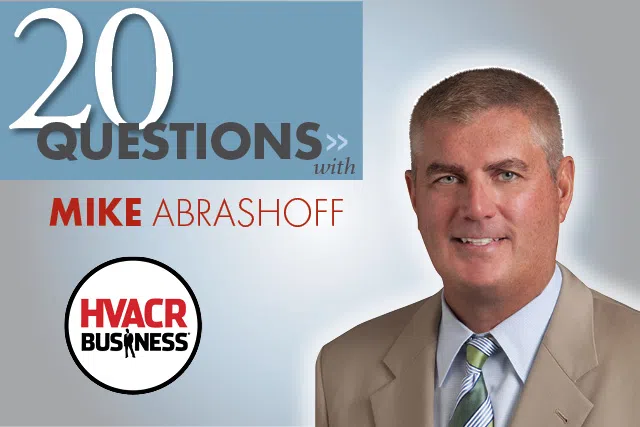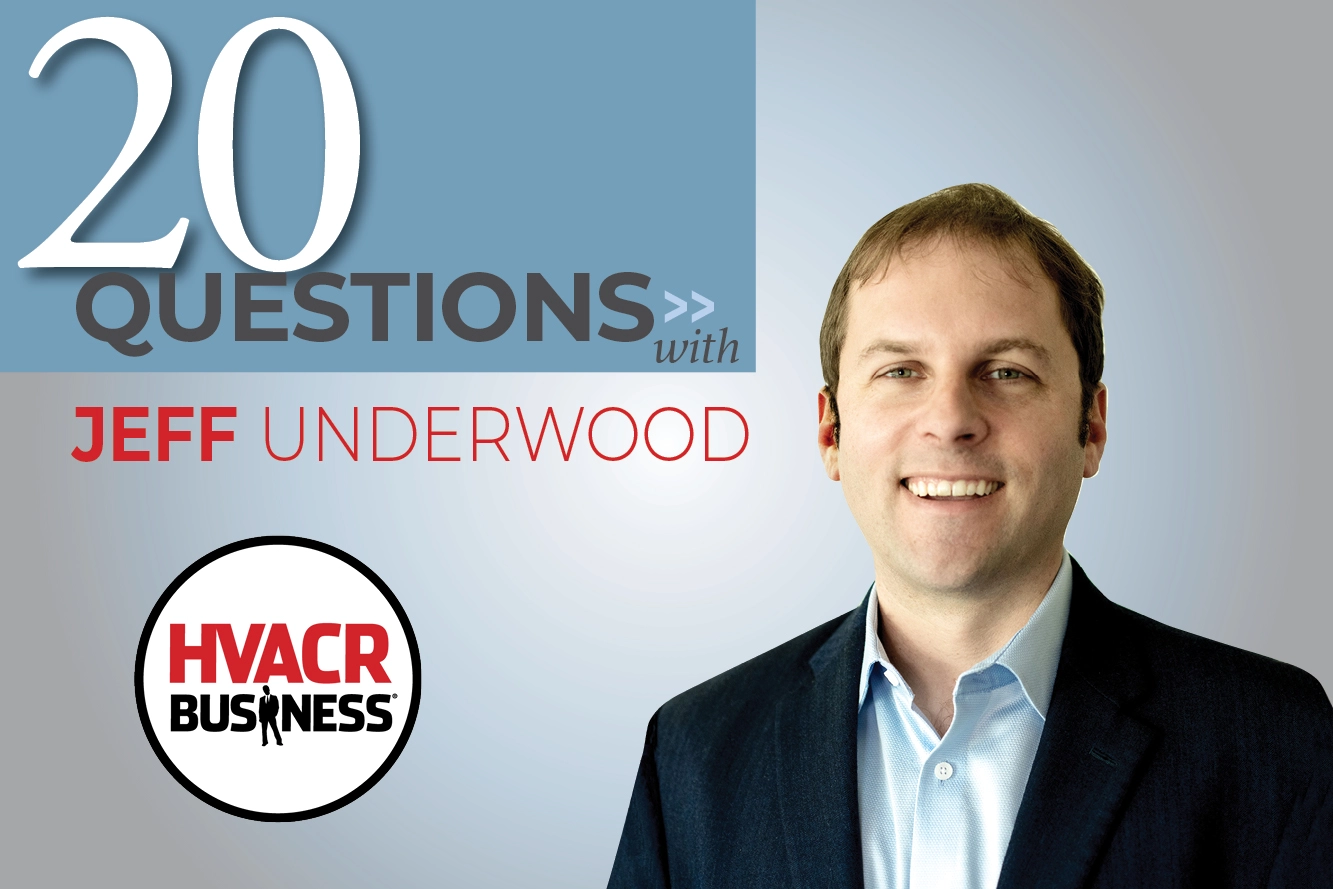Terry Tanker recently met with former U.S. Navy Captain Mike Abrashoff, who took control of the USS Benfold, one of the worst performing ships in the Pacific Fleet. After just 12 months, Abrashoff transformed the ship — using the same crew — and won the Navy’s Spokane Trophy for best-performing ship in the Pacific Fleet. The two discussed leadership, motivation, organizational transformation, Abrashoff’s best-selling book, “It’s Your Ship” and his training academy, Aegis Performance Group.
1. How did you enter the Navy?
I played football in high school and was recruited by all three service academies. I chose Annapolis.
2. What were your options after graduating Annapolis?
To become an aviator, a ship driver, a submariner or a marine — a select few can become Seals or go to med school, but those are rare. I wanted to be aboard a ship. So, based on your class rank you select an assignment. I graduated in the top 80 percent of my class [laughs]. As you can imagine, most everything was picked over when it was my time to select. I ended up on one of the rustiest old buckets in the Navy, along with some of the rustiest old officers. I found, however, that it wasn’t difficult to shine when your competition isn’t that great.
3. What ship was it?
The Albert David, a Garcia class frigate. The captain was abusive and he used to yell at us until veins popped out of his neck and forehead. As a result, nobody wanted to drive the ship. I went to 12 years of Catholic school with nuns; so getting yelled at was nothing new. I’d volunteer for every ship handling assignment. I knew I was going to get yelled at and flame sprayed (spit on), but it’s how I learned. Lo and behold, I got the CINCPACFLT (Commander in Chief of the Pacific Fleet) fleet ship handler of the year award as an Ensign. I was just 22 years old and the most junior guy to receive it.
4. What did you learn from that experience?
You can learn in almost any situation good or bad. Nobody wanted to be near the captain. I thought, “Well, I’m going to learn something.” So I threw myself in there. And yeah, I got yelled at, but, you know, they can’t take away your birthday and they can’t make the day any longer — right? You can pick up traits from people you respect and admire, and you can watch others and say, “I’m never going to be that person.” The Albert David was a learning experience for me on what not to do.
5. What was your next assignment?
I went to the Philippines where I was an Admiral’s aide. I was with him 18 months and spent nine of those at sea. I worked for an Admiral who had also been an Admiral’s aide and was treated poorly. I’ll never forget our first car ride together. He said, “Mike, I hated that job with a passion. I’m going to make sure what happened to me doesn’t happen to you.” He trained me and was a mentor. He was responsible for 84 ships. He taught me a ship reflects the personality of the commanding officer. On our first ship visit he told me, “You’ll know within the first 45 seconds of walking on a ship whether it’s going to be a good one or not. And it’s going to be a direct reflection of the personality of the Captain.”
6. How could he tell?
The general appearance of the ship and sailors, or how we greeted on the quarterdeck. I was skeptical, but after we visited 10 ships, he was spot on. All the ships reflected the personality of the Captain — the person at the top had a huge impact and this is true of companies too.
7. How important are mentors?
A mentor can help you learn and grow quickly, assuming you’re receptive to what they’re trying to teach you. I tried to learn something from every superior I worked for, and some were even willing to take me under their wing. The Admiral taught me there is incontrovertible proof that every unit, every organization reflects the personality of their captain or CEO.
8. Were you able to use that on your next assignment?
Let’s just say that information was now in my tool bag. My next ship, the USS Harry W. Hill, was one of the most technologically advanced ships in the Navy — a far cry from the Albert David. Unfortunately, I was ill prepared technically to be a department head on that ship and I was flailing. The Captain could have fired me for being incompetent, but he coached me until I had the technical skills I needed. I worked at it until I became the best, tactical action officer on the ship.
9. Do you have a leadership philosophy?
Leadership is situational. There are times when you have to be directional. As Captain, if I give the order to launch a missile I expect my crew to launch. I don’t want them to raise their hand and say, “Captain, have you thought of this?” You prepare and create discipline before a crisis. If people aren’t disciplined, when you really need them to dig deep, they won’t be there for you. My leadership philosophy is a blend of things. I realize it’s not about me and I can’t order excellence sitting in the captain’s chair. The only way to stay safe, either in the military or in the tough economic times, is to have an engaged workforce that takes as much ownership of the business as you do. You can’t order that. You have to create it each and every day.
10. What did you have to change when you became captain of the USS Benfold?
I needed to change the culture. I focused on giving my crew the opportunity to make decisions for the good of the ship. Micromanaging people is stifling. As the leader, there is no way you can do all of the jobs necessary to be effective. Giving people responsibility and holding them accountable are the biggest changes.
11. Can you give me an example?
The ship held about 450,000 gallons of fuel and we tried never to get below 50 percent, just in case we were sent out on a mission. Ships refuel in port, but they also have to be able to refuel at sea, and that’s dangerous. Ships have collided, people have gotten killed and it’s a career-ending event if you have a mishap refueling at sea. Because of that, the ship was only refueled in port before I became Captain. I changed that and we only refueled at sea. You’ve got to learn your craft and I wanted every officer on that ship to know how to refuel from an oiler at sea.
12. Impressive — so the crew responded well?
Yes, very much so. It’s a two-and-a-half-hour, all-hands-on-deck event. In fact, when we got to the Persian Gulf, my chief bosun’s mate said, “You know, we’ve never done this at night,” [laughs] so I decided from that point on, we would only refuel at sea, at night, and we became really good at it. Afterward, I realized it’s 120 degrees in the Persian Gulf during the day and it’s only 100 degrees at night, so nighttime actually made more sense. This was just one of the reasons we became known throughout the fleet as the ship on which everybody wanted to be.
13. What else did you do?
Simple things, such as letting the crew know what was going on in the world. On the closed circuit TV, we’d put on the news and sports scores while they were eating and, in between, I’d flash up my leadership principles: commitment, cohesion, accountability, creativity and innovation.
14. Did you know the ship was not performing well before you took command?
I didn’t know the extent of the severity. When I took command, I was only allowed to talk to my predecessor and no one else. Honest, self-evaluations — especially regarding leadership — are difficult for many to assess with accuracy. I was, however, able to look at all of the statistics. Retention rates are a good indication of the health of a ship, and businesses for that matter, and they were very low. Additionally, the USS Benfold had one of the highest accident rates. My assumption going in was there was going to be a lot of work to do. Another name for that is opportunity.
15. How did you fix that problem?
First, acknowledge it and own it. All this stuff goes together. If you have a high workman’s comp rate or if you lose people, the problem’s with you. Business owners need to know the problem is with them. I became involved in our safety programs. The other sailors saw it was important to me and it became important to them.
It’s funny how taking care of the small things helps the large things too. For example, we have our own fire suppression equipment onboard because, if there’s a fire at sea, we can’t call the fire department. We are the fire department. All the equipment has to be checked monthly and the technician has to sign their name. If there’s no name and date on the tag, then the maintenance is overdue and hasn’t been done. I’d walk down the passageways and stop in full view of sailors and check the tags so they’d understand and think, “This is important to the Captain. It’s going to be important to us.” If it’s important to the boss, it’s important to the employees.
16. I always thought the military was about practice and repetition until things become second nature — is that how you managed?
Command and control work for half of the training. The other half is teaching people to take action and responsibility in an interactive way. An Arleigh Burke-class destroyer is so advanced, we have an embedded training system on the ship. I could create a training simulation to which my crew had to respond. It’s so sophisticated, it responds to their actions. It’s so dynamic, command and control doesn’t work.
17. What’s the most fun you’ve had on board?
Without question, it’s “plane guarding” for an aircraft carrier. Planes have to take off into 30 knots of relative wind across the deck, so they line up on a destroyer or a cruiser so they can land on the flight deck. We’re also there in case they crash so we can pick them up. On a no wind day, the aircraft carrier has to crank up to 31 knots, to get enough wind across their deck. We’d have to do the same, so we’d be at full power with all four engines online. The ship is rumbling. It’s kicking up a rooster tail of water that’s two stories high and F18s are flying overhead at a hundred feet — it’s the loudest thing you’ve ever heard. It’s difficult to describe how exciting that is, but I would do that job for free every day.
18. You’ve written several books on leadership — did their success surprise you?
“It’s Your Ship” was the first one and I really didn’t know what to expect. A few neat things happened. I told myself if it was successful I was going to buy a Porsche. It made the New York Times bestseller list, so I found a 2001 Porsche 911 Cabriolet, which I still have. Next, Sports Illustrated interviewed Bill Belichick. They asked him what his favorite leadership book was and he said, “It’s Your Ship!” He’s amazing because he takes players from everywhere and gets them to play together as a team, which has been my whole message. Finally, the success of my book was the impetus to create Aegis Performance Group (APG).
19. Can you tell me more about the APG?
I try to motivate people to become better leaders, but leadership is tough. Typically, when the first trouble call comes in, you forget everything. I teamed up with Stacy Cunningham who put the academics behind everything I teach. Now we have a leadership program. It’s a virtual, six-month program that takes just 15 minutes a week. The cost is modest and the coaching can be personalized.
It’s for leaders and employees. Let’s say you have 25 employees — wouldn’t it be nice to know what motivates them so you can connect with them better and give them the opportunities they’re looking for? We try to reduce risk and help managers to understand who their people are and what drives them, and then they can make better-informed decisions.
20. How do you personalize the training?
We give assessments based on your motivators, behaviors and thinking style. For example, there are three basic thinking styles: you’re people-oriented, big picture-oriented or task-oriented. Most are two of these. Every organization needs to understand the personnel and their thinking styles. They may be doing more harm than good if the owner has no big picture skills or their technician has no people skills. What we do is help companies understand thinking styles, behavior and motivation.






